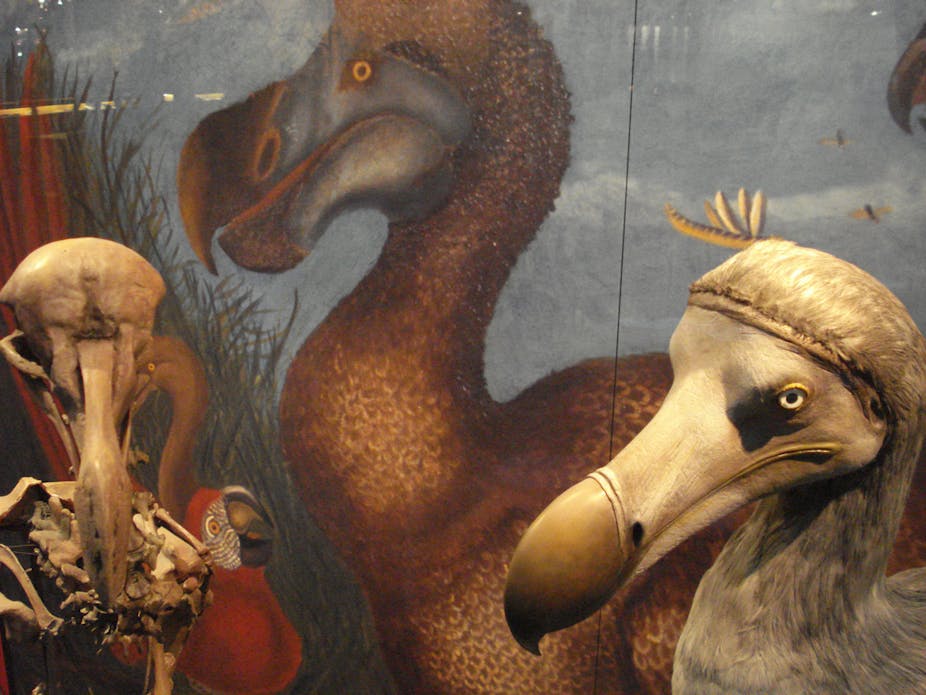My wildlife friends and I often talk about what species we would bring back from extinction. I am torn between the dodo and the thylacine, also known as the Tasmanian tiger. This was once a speculative, sci-fi debate but not anymore. Ever since Dolly the sheep was cloned, conservation biologists have muted the idea and the process of de-extinction – bringing back dead species – is coming closer to reality.
De-extinction can be achieved by one of two means: selective breeding or cloning. In the selective breeding method we try to re-create extinct species such as the aurochs (extinct large cattle from Europe and Asia) by looking for their surviving genes among existing cattle and breeding animals to favour these genes. Then you compare the genome of the resulting animals with that for aurochs until you have what is genetically an auroch.
The second method essentially involves finding the DNA of an extinct species and inserting it into a recipient egg cell and recipient animal – the cloning process. This second process is limited to species that have gone extinct more recently (hundreds of years) because you need to find intact DNA, so I am afraid there will be no Jurassic Park. We would also need to find DNA from several different individuals otherwise we would end up with problems due to inbreeding such as those seen in white tigers.

Unsurprisingly the “instant fix” of cloning has received more interest as it would not depend on many generations of captive breeding. A wide range of species have been suggested for cloned de-extinction from the dodo to the woolly mammoth.
Initially, I liked the idea. I’d love to see a dodo in a zoo or even better to see wild woolly mammoths on an ecotourism trip to the steppes of Siberia. But such meddling raises a host of questions.
For instance, an African elephant would be the obvious recipient for woolly mammoth DNA. But as mammals learn a considerable part of their behaviour from their parents and peers – are we not just creating an elephant in mammoth’s clothing? It would, therefore, seem our resurrected animals would need some kind of training to survive in the wild, which may not be unlike the survival training reintroduced zoo animals already receive.

If a species was successfully reintroduced and its population grew to previous levels it would have a major ecological impact. The animals which have occupied its ecological space may find themselves squeezed out. Governments would, rightly, be very cautious about the reintroduction of such animals.
Show me the money
Given the limited money available for wildlife conservation it’s not clear that the expense of bringing back the dodo makes sense. A simple utilitarianism would suggest not; the cost of resurrecting the dodo could be used to save many other living species from extinction. For example, it now appears that a cloning approach may be the only solution to save the northern white rhinoceros from extinction – there are now only five individuals left.
However society, thankfully, does not always run according to such utilitarian analyses. So perhaps the dodo will have its day – even if that is just living in a zoo. It may behave like a farmyard chicken but it would still be a powerful symbol for species conservation: I suspect some zoos would be shedding their giant pandas to go into dodos.
Dead as a dodo
But what kind of symbol would a living dodo be? It can no longer be the symbol of extinction; the Rubber Dodo Award for people who have contributed most to species extinction would need to be renamed. It would be testimony to how far science has come and how far science can take us.
But this sense of scientific wonder isn’t always helpful. A living dodo would give out the wrong message to society and politicians – we can destroy anything we like and scientists will eventually find a way to fix it. This seems, for example, to be the hope with climate change.
As a species I think we need to accept responsibility for what we have done to this planet and not have blind faith that in the future scientists will fix all of our mistakes. We need to live with our mistakes and learn from them. It is for this reason I am not wishing for de-extinction.

